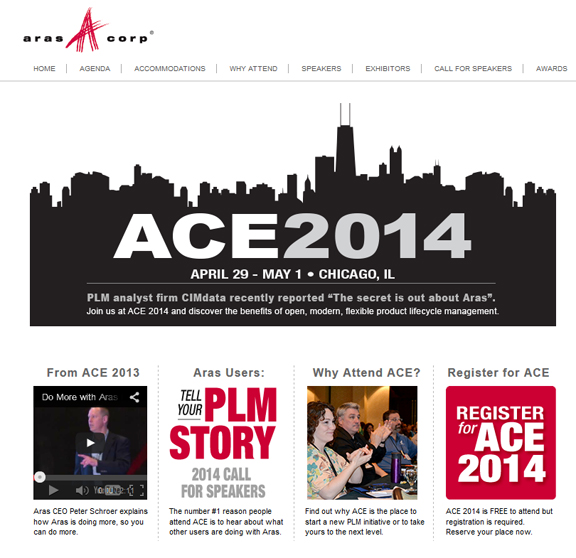Battling the Spreadsheet Loyalists: A User Story for the ACE 2014 Conference
April 7, 2014
When he assumed the role of a project traffic cop at CNH Industrial Parts & Service, Collin Fagan didn’t realize the tangled web he was stepping into. He had a rude awakening when someone showed him the company’s project-tracking method. It was “a 165-column spreadsheet with more than 70 pivot tables, with thousands and thousands of rows,” he recalled.
Despite its complex setup, the spreadsheet wasn’t accurate either, because it relied on more than 20 users to input departmental statistics. Fagan recalled a colleague spending days fixing data errors resulting from input. Just to check on the status of certain parts in development, it took rounds of communication from senior staff. “These were talented engineers hired at fairly expensive rates,” Fagan noted, “and we were wasting their time—at least 20-25 hours a week—just on data gathering.”
It quickly became clear to Fagan that, instead of managing product launches, he risked becoming a clerical person. So he decided to take a stand. “I went to my boss, and I said, ‘Fire me if you have to, but I won’t take over that spreadsheet.’ ” Fortunately, Fagan’s boss agreed the business had outgrown the spreadsheet. Fagan, responsible for product development & platform integration, is a much happier man now that project activities are flowing through Aras PLM, implemented a year ago.
From experience, Fagan knew PLM adoption is partly culture change and partly software integration. “Aras has been pretty flexible to meet our business processes, whereas some of the big names would have made us bend our processes to meet their software’s structure,” he said.“Without knowing a programming language, we could customize Aras. We customized Aras to match our processes, so from a cultural standpoint, people didn’t have to change too much. The hardest part was getting them to let go of their spreadsheet.”
For that battle, Fagan had the company’s management as reinforcement. In one meeting, when a spreadsheet loyalist brought up Excel data, Fagan’s boss declared, “If it doesn’t exist in Aras, it doesn’t exist.” That no-turning-back approach helped spur Aras adoption. “The ever growing user base has gone from ‘reluctant to log into the system’ to ‘feature hungry junkies,’ ” he reported.
For the more complex customization tasks, CNH engaged Aras staff as consultants. “We could have done it ourselves if we were willing to spend time training ourselves,” said Fagan, “but it was a matter of time. Instead of taking months, it took just weeks with a consultant who does it as his career.”
Today, when Fagan needs to query the status of a project or a part, he logs into Aras. “I don’t have to contact 20 people to get an answer; I don’t have to bother anybody’s boss,” he reflected. In the next software upgrade, Fagan will look into enabling Aras access from mobile devices. The feature is not critical for engineers, but adds efficiency for upper management, especially for looking up project reports and status updates while on the road.
Fagan credits Aras reseller and partner PSC for their help in the implementation. Fagan is scheduled to deliver a talk on Aras adoption at the upcoming ACE 2014 Conference, dedicated to Aras PLM users (April 29-May 1, Chicago, IL).
Note: DE is a media sponsor of ACE 2014.
Subscribe to our FREE magazine, FREE email newsletters or both!
About the Author
Kenneth Wong is Digital Engineering’s resident blogger and senior editor. Email him at [email protected] or share your thoughts on this article at digitaleng.news/facebook.
Follow DE






